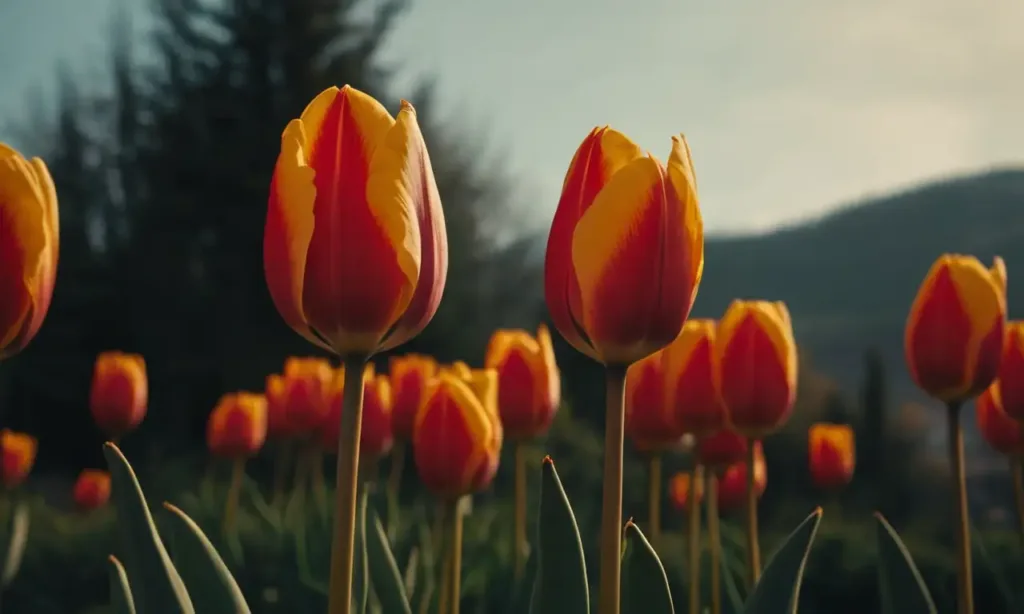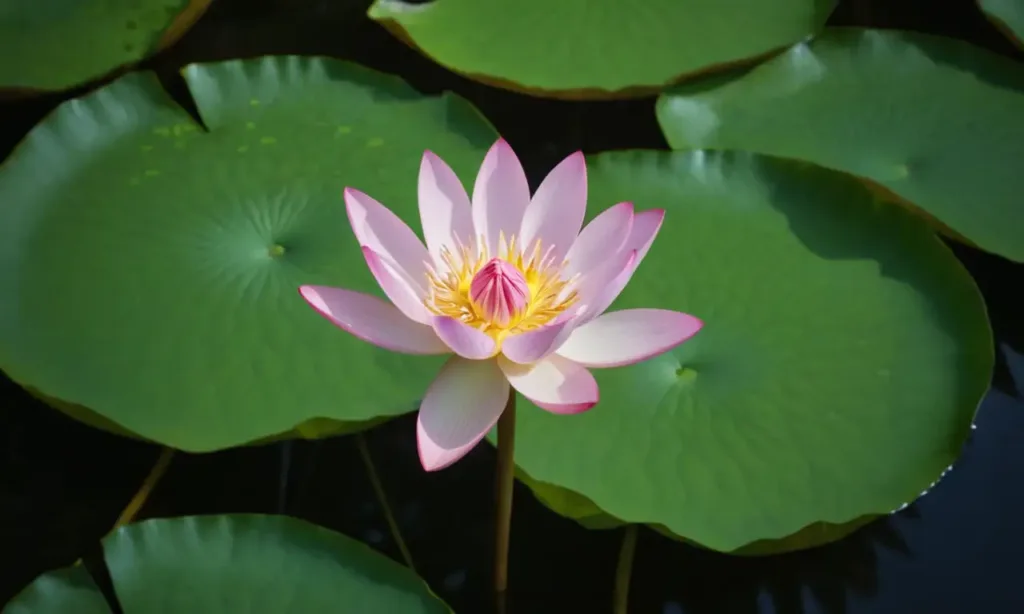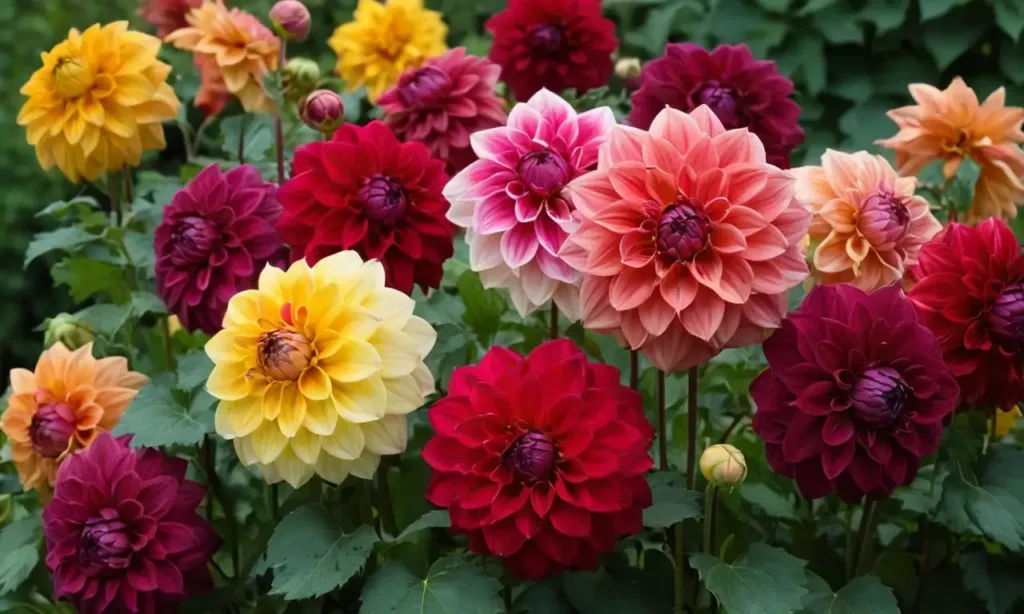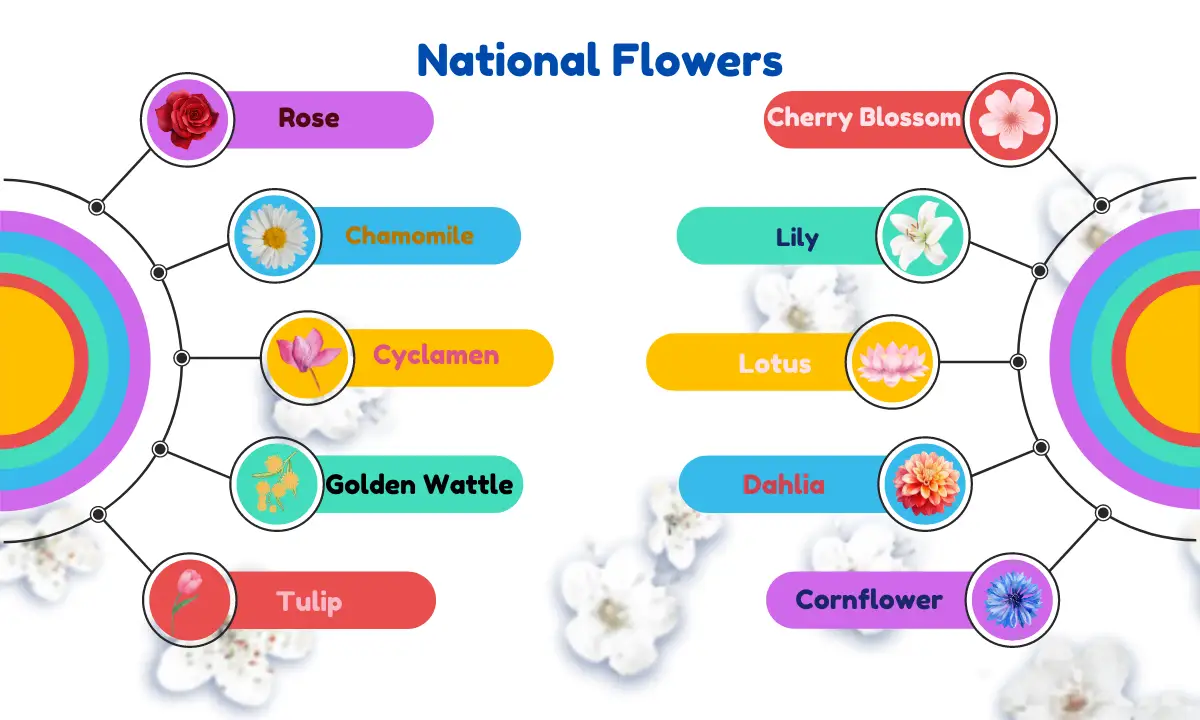National flowers symbolize a nation’s identity, history, and culture, often embodying the country’s values and aspirations. From the elegance of the lotus to the resilience of the rose, each flower tells a unique story about the nation it represents. In this article, we’ll explore the national flowers of 10 major countries, highlighting their significance and the rich symbolism they carry.
What is the national flower of the USA?
The national flower of the USA is the Rose, symbolizing love, beauty, and strength. It was officially designated in 1986 and holds significant cultural importance in American history.
What Is a National Flower and Why Does It Matter?
A national flower is a symbol chosen to represent the country’s natural beauty, cultural significance, and sometimes even its historical legacy. These flowers often have deep roots in national traditions, playing a part in ceremonies, folklore, and everyday life.
Governments or cultural institutions select these flowers based on their indigenous nature, historical importance, or how well they symbolize the country’s values. The national flower often reflects the spirit and identity of the nation, connecting people to nature and their heritage.
Table for Quick Reference:
| Country | National Flower | Symbolism |
|---|---|---|
| USA | Rose | Love, Beauty, Strength |
| Russia | Chamomile | Healing, Purity, Simplicity |
| Israel | Cyclamen | Elegance, Resilience |
| Australia | Golden Wattle | Unity, Optimism, Resilience |
| Turkey | Tulip | Elegance, Perfection |
| Japan | Cherry Blossom (Sakura) | Beauty, Transience, Renewal |
| France | Lily | Purity, Royalty, Honor |
| India | Lotus | Spiritual Purity, Enlightenment |
| Mexico | Dahlia | Strength, Creativity, Individuality |
| Germany | Cornflower | Hope, Inspiration, Love |

1. National Flower of the USA: The Rose
The Rose was designated as the national flower of the USA in 1986, symbolizing love, beauty, and strength. This flower holds significant cultural importance in American history, often used in various ceremonies and national celebrations. Former President Ronald Reagan even dedicated the U.S. National Rose Garden in Washington, D.C., highlighting the rose’s prominence in American culture.
The rose’s varied colors represent different meanings, from red for love to yellow for friendship. This diversity of symbolism makes it a fitting emblem for the multicultural and diverse nature of the United States.

2. National Flower of Russia’s: The Chamomile
Russia’s national flower, the Chamomile, symbolizes healing, purity, and simplicity. It plays an essential role in Russian folk medicine, often used as a remedy for various ailments. Beyond its medicinal value, the chamomile represents a connection to nature and traditional Russian culture, with its delicate white petals symbolizing peace and serenity.
Chamomile tea is also a popular beverage in Russia, reflecting its significance in everyday life.
Also read Top 10 Most Expensive Jewelry Brands in India: A Guide to Luxury and Elegance.

3. Israel’s National Flower: The Cyclamen
The Cyclamen was chosen as Israel’s national flower due to its association with resilience and elegance. Found in the rocky terrain of Israel, this flower blooms in shades of pink and white, thriving in difficult environments. The cyclamen reflects the country’s ability to endure and flourish, much like its people.
Historically, it was also chosen to represent the spirit of the newly independent state of Israel in the mid-20th century.

4. Australia’s National Flower: The Golden Wattle
The Golden Wattle is Australia’s national flower and a symbol of unity and resilience. Known for its bright yellow flowers, the golden wattle thrives in a range of climates, reflecting Australia’s adaptability. This flower is celebrated on Wattle Day, an official event in Australia, and its vibrant yellow is often used in national colors.
The golden wattle also represents optimism, as it blooms after bushfires, showing nature’s ability to recover.

5. Turkey’s National Flower: The Tulip
The Tulip holds a special place in Turkish history, particularly during the Ottoman Empire’s “Tulip Era” when the flower symbolized elegance, beauty, and wealth. Tulips were highly prized by Ottoman sultans and became a symbol of the empire’s prosperity. Even today, the tulip remains deeply embedded in Turkish art and culture.
The flower’s graceful shape and vibrant colors make it a fitting representation of Turkey’s rich and artistic heritage.

6. Japan’s National Flower: The Cherry Blossom (Sakura)
The Cherry Blossom, or Sakura, is Japan’s beloved national flower, representing the beauty of life and the fleeting nature of existence. Each year, Japan celebrates Hanami, a festival where people gather to admire the blooming cherry blossoms. The cherry blossom season is a reminder of renewal and the transient nature of life, making it one of the most culturally significant events in Japan.
The flower also symbolizes new beginnings, often blooming during the start of the Japanese school year.

7. France’s National Flower: The Lily (Fleur-de-Lis)
The Lily, also known as the Fleur-de-Lis, has long been associated with French royalty and purity. This emblem is steeped in religious and historical significance, representing the French crown and the Catholic Church. The lily symbolizes nobility, honor, and purity, often seen in French heraldry and architecture.
The Fleur-de-Lis is a lasting symbol of France’s rich cultural history.

8. India’s National Flower: The Lotus
The Lotus is India’s national flower, deeply rooted in the country’s religious and cultural traditions. The lotus symbolizes purity, enlightenment, and spiritual awakening in Hinduism and Buddhism. Despite growing in muddy waters, the lotus blooms in pristine beauty, representing resilience and perseverance.
In Indian art and literature, the lotus is a symbol of divine beauty and is often associated with deities such as Vishnu and Lakshmi.

9. Mexico’s National Flower: The Dahlia
The Dahlia, native to Mexico, symbolizes strength, creativity, and individuality. The Aztecs used the dahlia for medicinal purposes, and today it remains a symbol of national pride. The dahlia comes in various vibrant colors, representing the diversity of Mexican culture.
This flower’s ability to thrive in diverse environments reflects the strength and creativity of the Mexican people.

10. Germany’s National Flower: The Cornflower
Germany’s national flower, the Cornflower, represents hope, inspiration, and love. The cornflower is known for its striking blue petals and has been a symbol of German pride since the 19th century. It also holds a place in German romantic poetry, often symbolizing inspiration and love.
This simple yet elegant flower stands for the enduring spirit of the German people.
Incorporating National Flowers into Modern Life
National flowers are celebrated today in various forms, from festivals to official emblems. Many nations feature their national flowers in ceremonies, stamps, coins, and artwork, ensuring their preservation and continued significance in modern culture. These flowers also inspire environmental conservation efforts, as they represent the natural beauty of their respective countries.
Conclusion
National flowers offer a window into the heart of each country, telling stories of resilience, beauty, and cultural pride. Whether it’s the cherry blossoms of Japan or the tulips of Turkey, each flower carries a unique narrative that reflects its nation’s values. Stay tuned as we explore more national flowers in our upcoming posts.
Join Telegram Channel